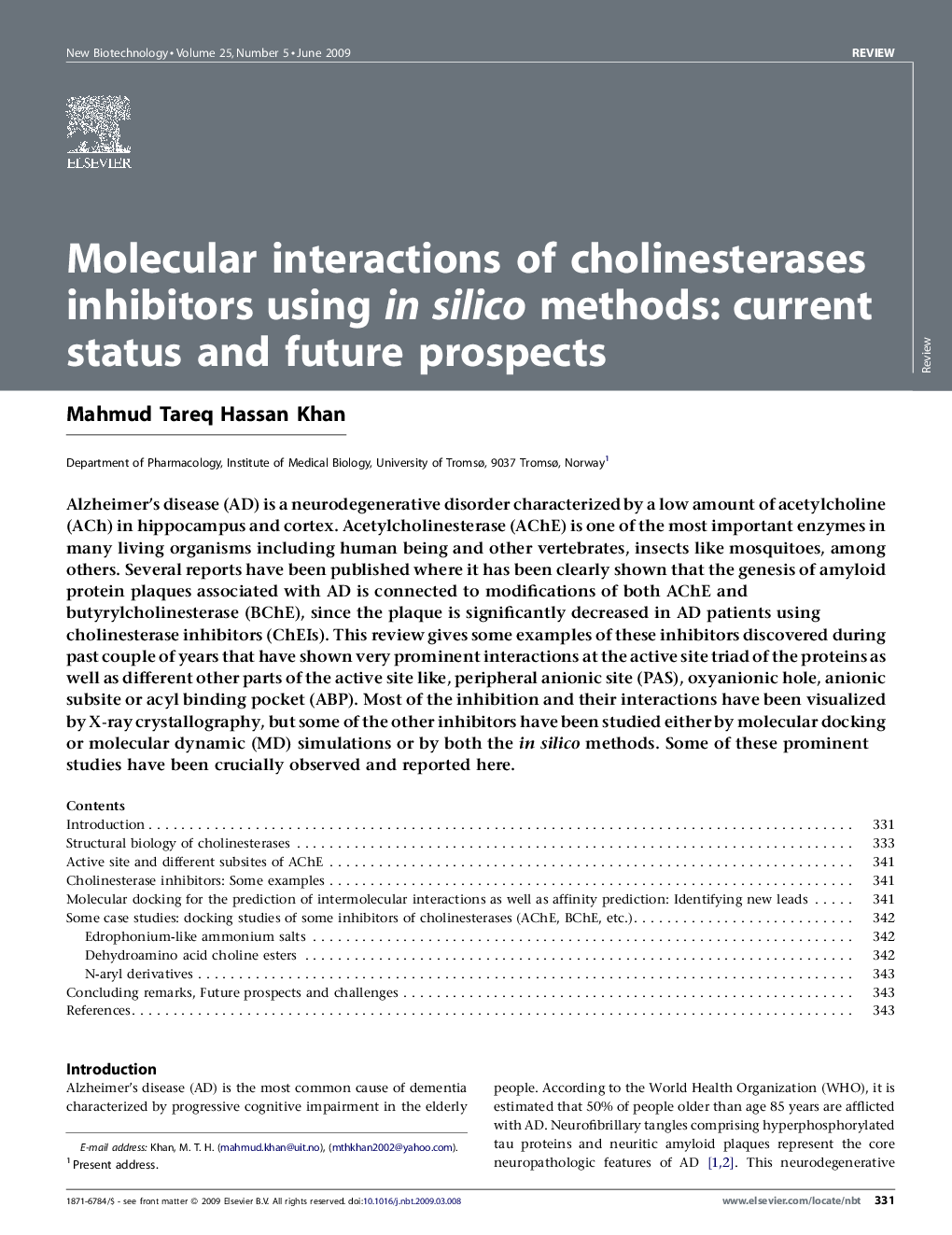| Article ID | Journal | Published Year | Pages | File Type |
|---|---|---|---|---|
| 33879 | New Biotechnology | 2009 | 16 Pages |
Alzheimer's disease (AD) is a neurodegenerative disorder characterized by a low amount of acetylcholine (ACh) in hippocampus and cortex. Acetylcholinesterase (AChE) is one of the most important enzymes in many living organisms including human being and other vertebrates, insects like mosquitoes, among others. Several reports have been published where it has been clearly shown that the genesis of amyloid protein plaques associated with AD is connected to modifications of both AChE and butyrylcholinesterase (BChE), since the plaque is significantly decreased in AD patients using cholinesterase inhibitors (ChEIs). This review gives some examples of these inhibitors discovered during past couple of years that have shown very prominent interactions at the active site triad of the proteins as well as different other parts of the active site like, peripheral anionic site (PAS), oxyanionic hole, anionic subsite or acyl binding pocket (ABP). Most of the inhibition and their interactions have been visualized by X-ray crystallography, but some of the other inhibitors have been studied either by molecular docking or molecular dynamic (MD) simulations or by both the in silico methods. Some of these prominent studies have been crucially observed and reported here.
